A Városi Eső projekt keretében 2024. szeptember 8-11-e között egy lyoni szakmai tanulmányúton vehettek részt a partnerönkormányzatok képviselői.
Az előző tanulmányutaktól eltérően most az elsődleges szempont a helyi szabályázási környezet, a stratégiaalkotás és az intézményi működés megismerése volt két intézménynél – a Rhone-Földközi-tenger-Korzika Vízügyi Hatóságnál (Agence de l’Eau Rhone Méditerranée Corse), valamint a Lyon Agglomerációs Önkormányzatánál (Métropole de Lyon) .
Ezen kívül kettő vízgazdálkodási jó példát is megnéztünk helyszíni látogatásokon a Jardin Jacob Kaplan és a Rue Garibaldi városrészeken, melyek során a delegációhoz csatlakozott az ADOPTA szakmai szervezet elnöke is. Az ADOPTA vízgazdálkodási témák körül nyújt szakmai támogatást önkormányzatoknak, beruházóknak, tervezőknek, kivitelezőknek és egy közös platformot biztosít Franciaországban a fenntartható, környezetbarát és reziliens vízgazdálkodási módszerek kidolgozására.

Rhone-Földközi-tenger-Korzika Vízügyi Hatóság

Franciaországban 6 vízügyi hatóság működik, a vízgyűjtő területeknek megfelelően. A vízügyi hatóságok állami szervezetek, melyek pénzügyi autonómiával rendelkeznek: költségvetését az adott vízgyűjtő területén beszedett, minden fogyasztót érintő vízdíjak alkotják.
Feladatuk egyrészt a vízgyűjtő területet érintő, vízgazdálkodási fő irányvonalak meghatározása, másrészt a beszedett vízdíjak közvetlen visszaforgatása vízgazdálkodási támogatásokra, beruházásokra. A szervezet érdekképviseleti mechanizmusok útján, demokratikusan, parlement-szerűen működik: 6 évre szavazzák meg a vízdíjak mértékét és a fő fejlesztési irányokat.
Jelenleg a fő irányvonalak a természetes vizek védelme és visszaállítása, a klímaadaptáció támogatása, valamint a városi természetalapú megoldások alkalmazása vízkezelésben.
Fő tanulságok:
Lyon Agglomerációs Önkormányzata

A szervezet 59 településből áll és bizonyos, az egész területre kiterjedő feladatokat – pl. építési szabályzat, vízgazdálkodás, közlekedés – ezen a szinten kezelnek.
A főépítészi részleggel („Tervezési és területi stratégia igazgatóság”) és a vízgazdálkodási részleggel találkoztunk, és első sorban a csapadékvízkezelést érintő szabályozási módszereket ismertük meg. Alapvetően hasonló szabályozási eszközökkel dolgoznak, mint a magyarországi települések, azonban ezek szigorúbbak, átfogó szemléletmódúak és elkötelezettebbek a klímaváltozáshoz való alkalmazkodás terén.
Jó példák
Fő tanulságok
Jardin Jacob Kaplan
A sűrűn beépített városrészben egy rozsdaövezet-fejlesztésként magánberuházásokból épülő társasházak között vásárolt ingatlant és alakított parkká az önkormányzat – a társasházak megépülését csak ezzel a feltétellel engedélyezte.
A park melletti iskola alatt 100 m3-es ciszterna található, ahol a kisebb csapadékot (15 mm) tárolják és újrafelhasználják későbbi öntözésre és a parkban lévő szökőkút működtetésére. A park területén hatalmas szikkasztó sávok találhatók (zöld+kavicsos), ahova a környező társasházak tetőiről vezetik a nagy csapadékvizet (20 éves átlag, 60 mm), mely 3 nap alatt elszikkad. Emellett felszíni medencéket létesítettek elárasztható területekként, ahova a kavicsos sávból vezetik a vizet. A 20 éves átlagnál nagyobb csapadékesemény esetén a túlfolyón keresztül a közcsatornába jut a csapadékvíz.
A sűrűn beépített városrészben egy rozsdaövezet-fejlesztésként magánberuházásokból épülő társasházak között vásárolt ingatlant és alakított parkká az önkormányzat – a társasházak megépülését csak ezzel a feltétellel engedélyezte.
A park melletti iskola alatt 100 m3-es ciszterna található, ahol a kisebb csapadékot (15 mm) tárolják és újrafelhasználják későbbi öntözésre és a parkban lévő szökőkút működtetésére. A park területén hatalmas szikkasztó sávok találhatók (zöld+kavicsos), ahova a környező társasházak tetőiről vezetik a nagy csapadékvizet (20 éves átlag, 60 mm), mely 3 nap alatt elszikkad. Emellett felszíni medencéket létesítettek elárasztható területekként, ahova a kavicsos sávból vezetik a vizet. A 20 éves átlagnál nagyobb csapadékesemény esetén a túlfolyón keresztül a közcsatornába jut a csapadékvíz.
Fő tanulságok
Rue Garibaldi
Többsávos sugárút fejlesztése valósult meg, ahol az autóforgalom területének egy részét visszaadták a gyalogosoknak, kerékpárosoknak, zöldfelületnek. A járdáról és a bicikliútról a zöldsávba (fasorral) vezetik az esővizet, a buszsávról a sugárút alatti, már nem használt aluljáróban tárolják a csapadékot és újrafelhasználják gyökérzónás csepegtetőrendszerrel történő öntözésre és a járdák takarítására.
Kutatások és vizsgálatok alapján a zöldsávba vezetett vízből származó szennyeződéseket a talaj felületi rétege megszűri, csak ezt kell cserélni – ezért később fejlesztett helyszíneken már az autóútról is a zöldsávba vezetik a csapadékvizet!
A fákon dendrológiai mérőműszerek segítségével mérik a csapadékvízszikkasztás hatását (növekedés, evapotranszpiráció monitoringja).


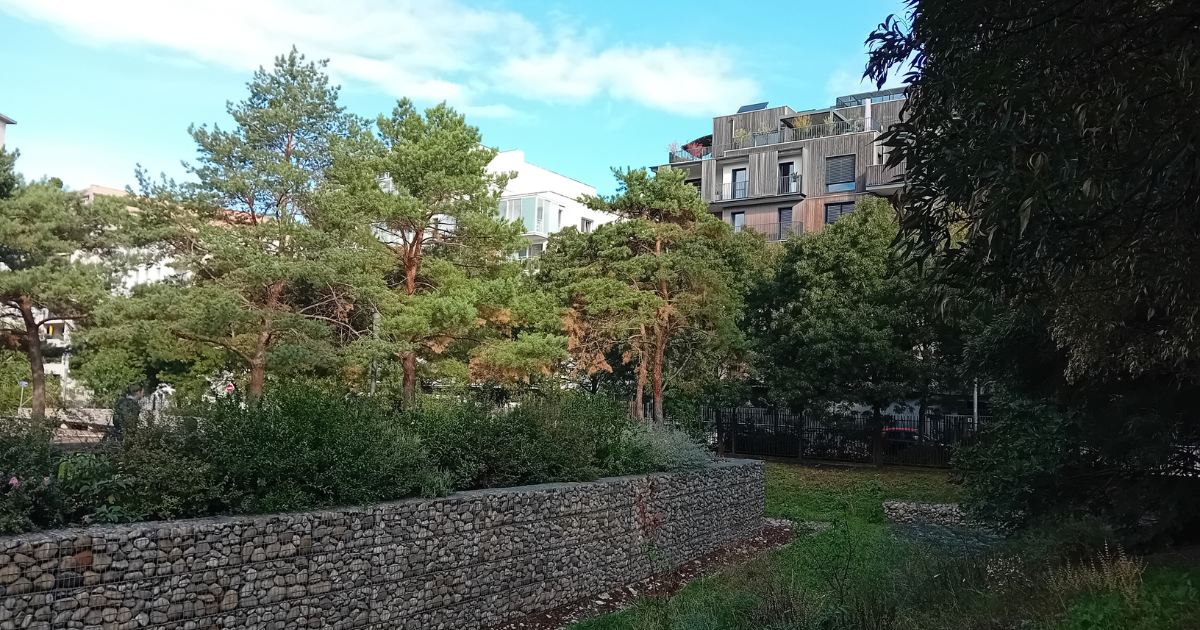
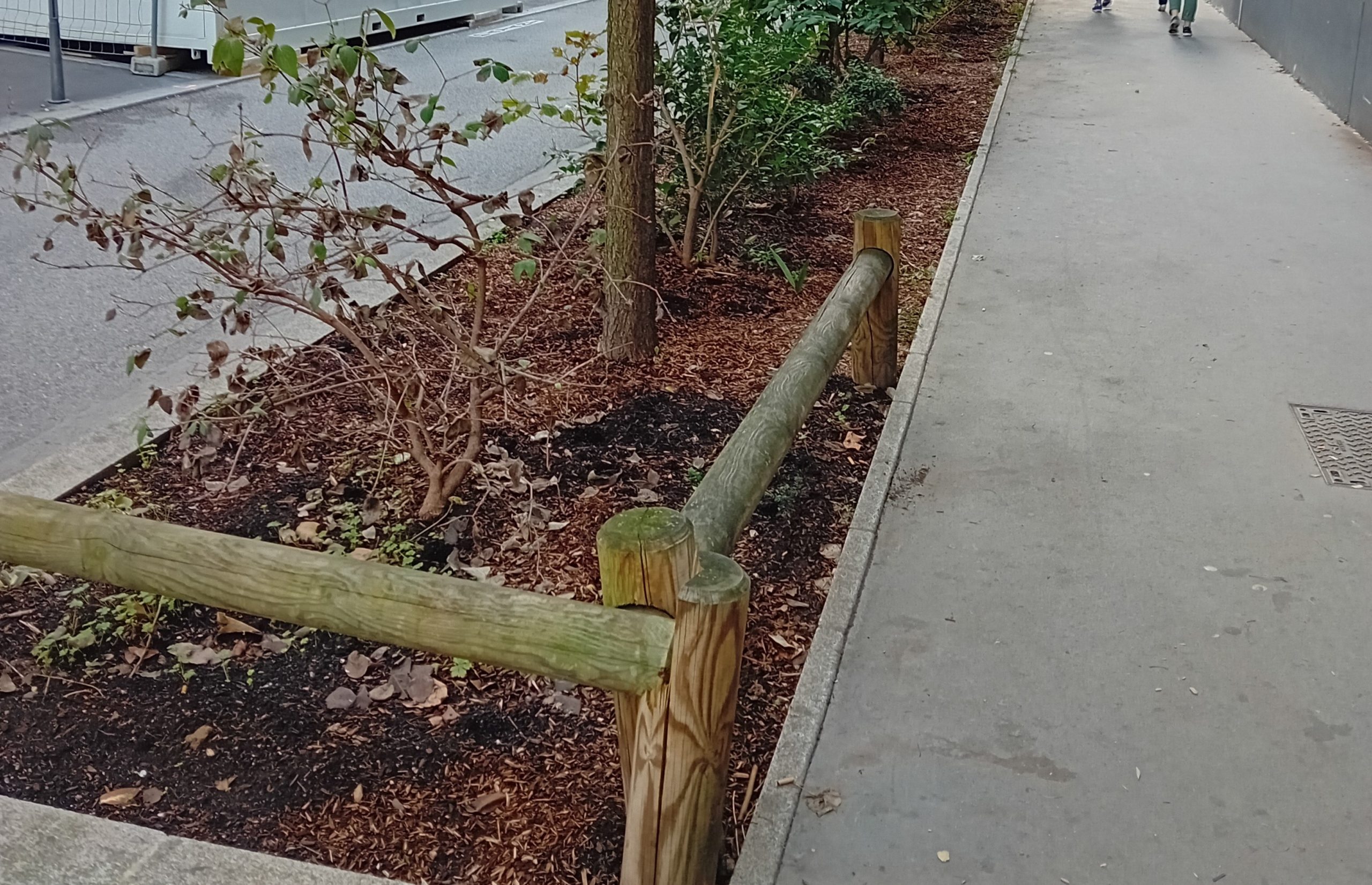

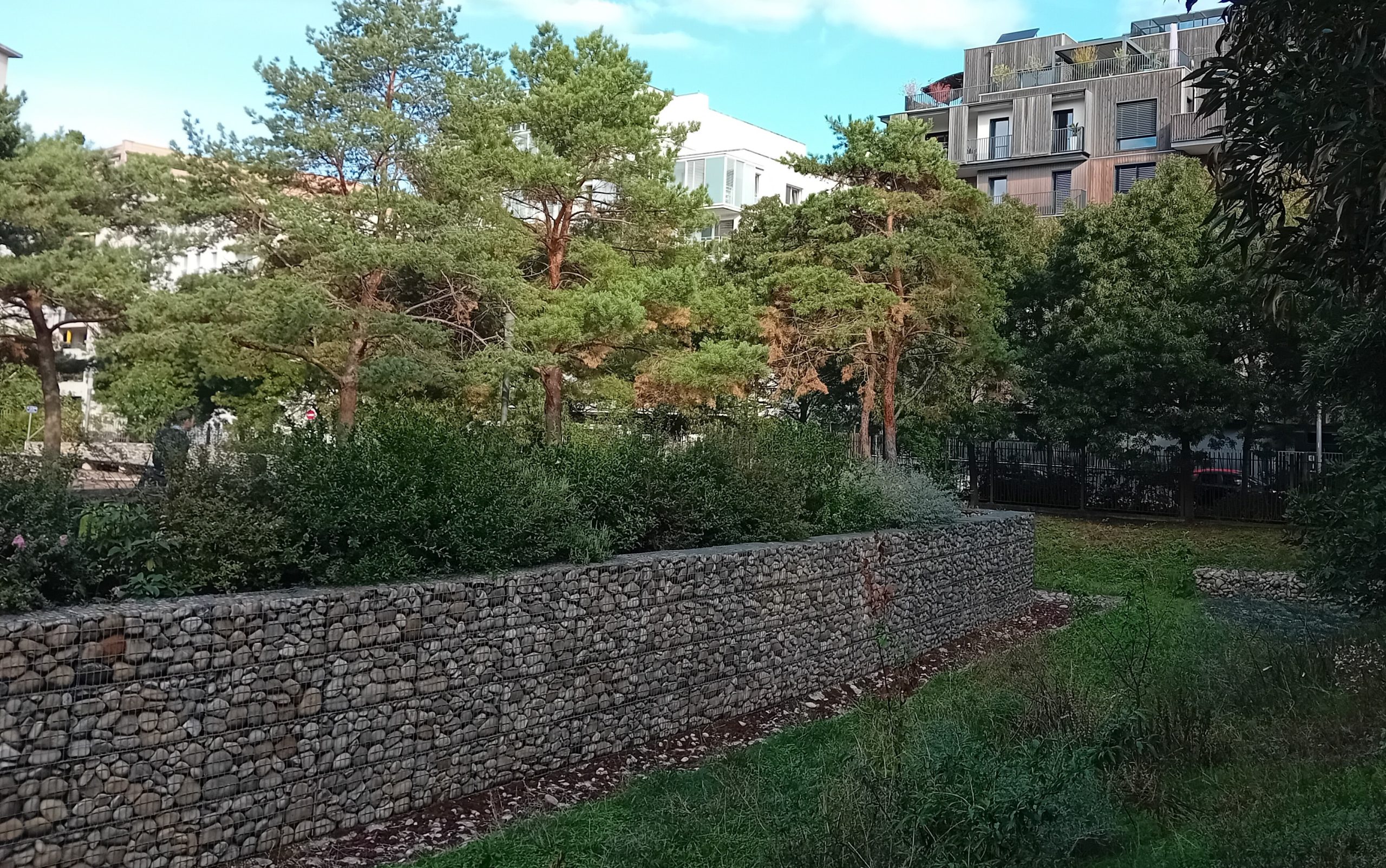

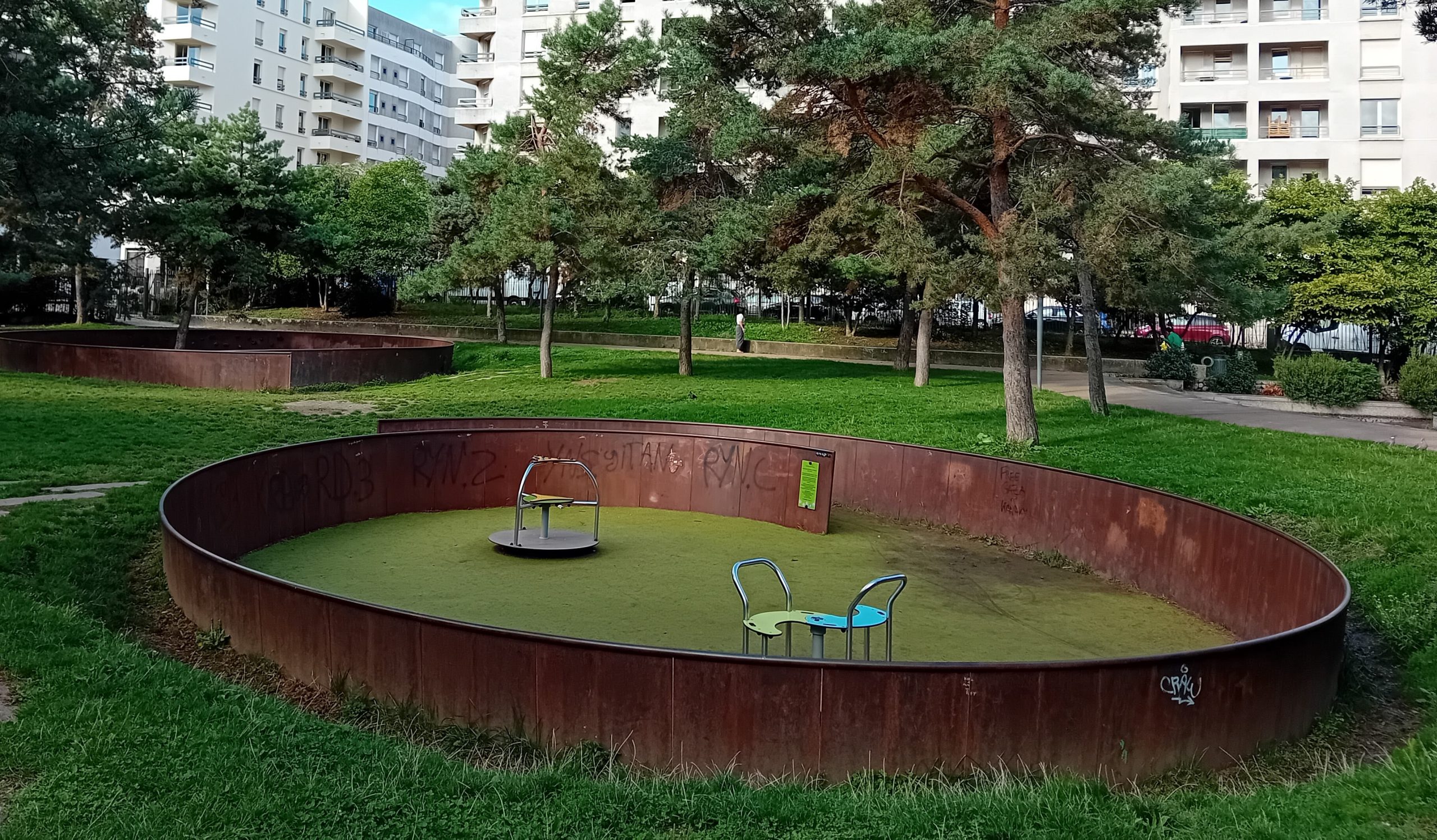
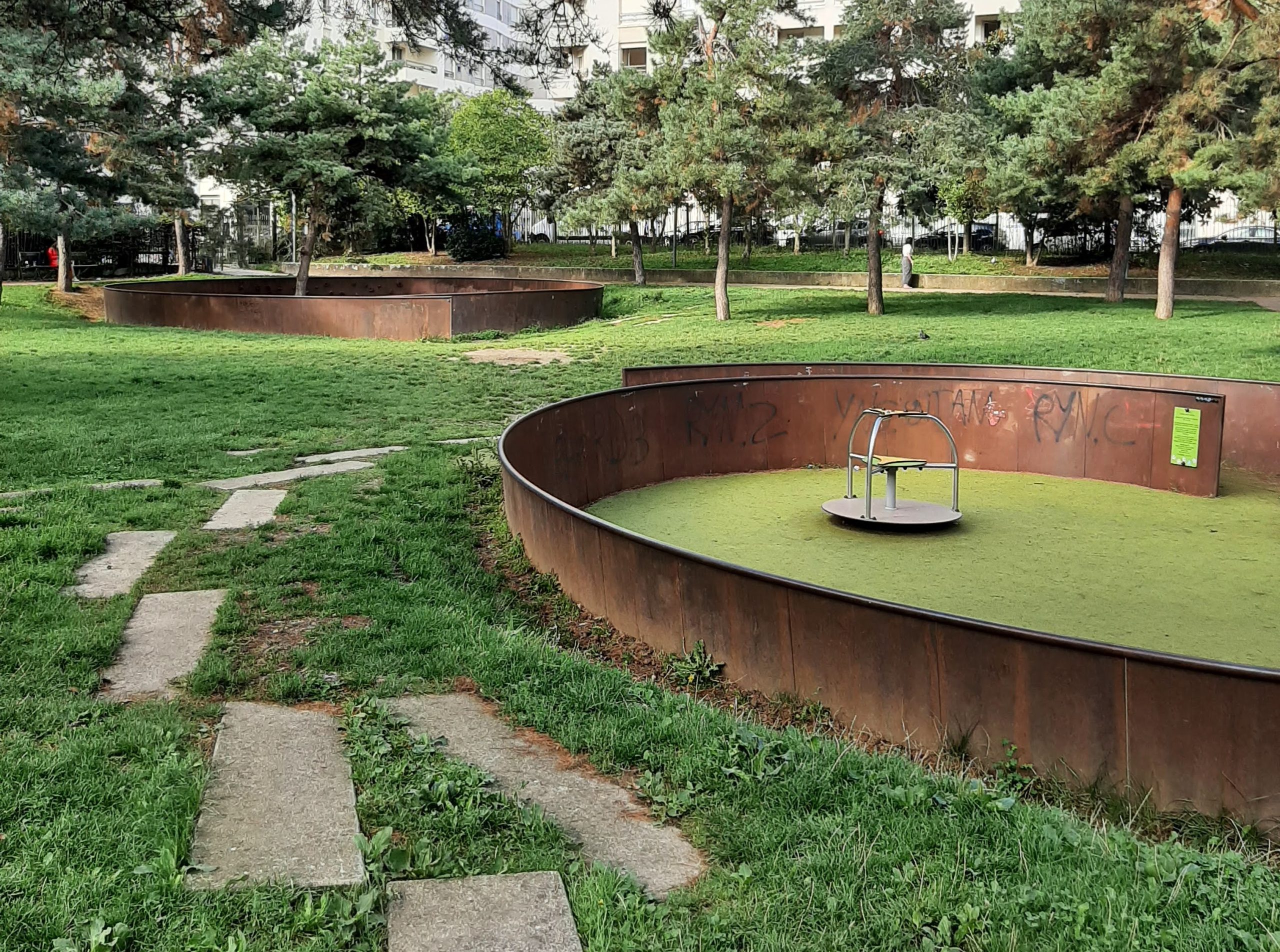
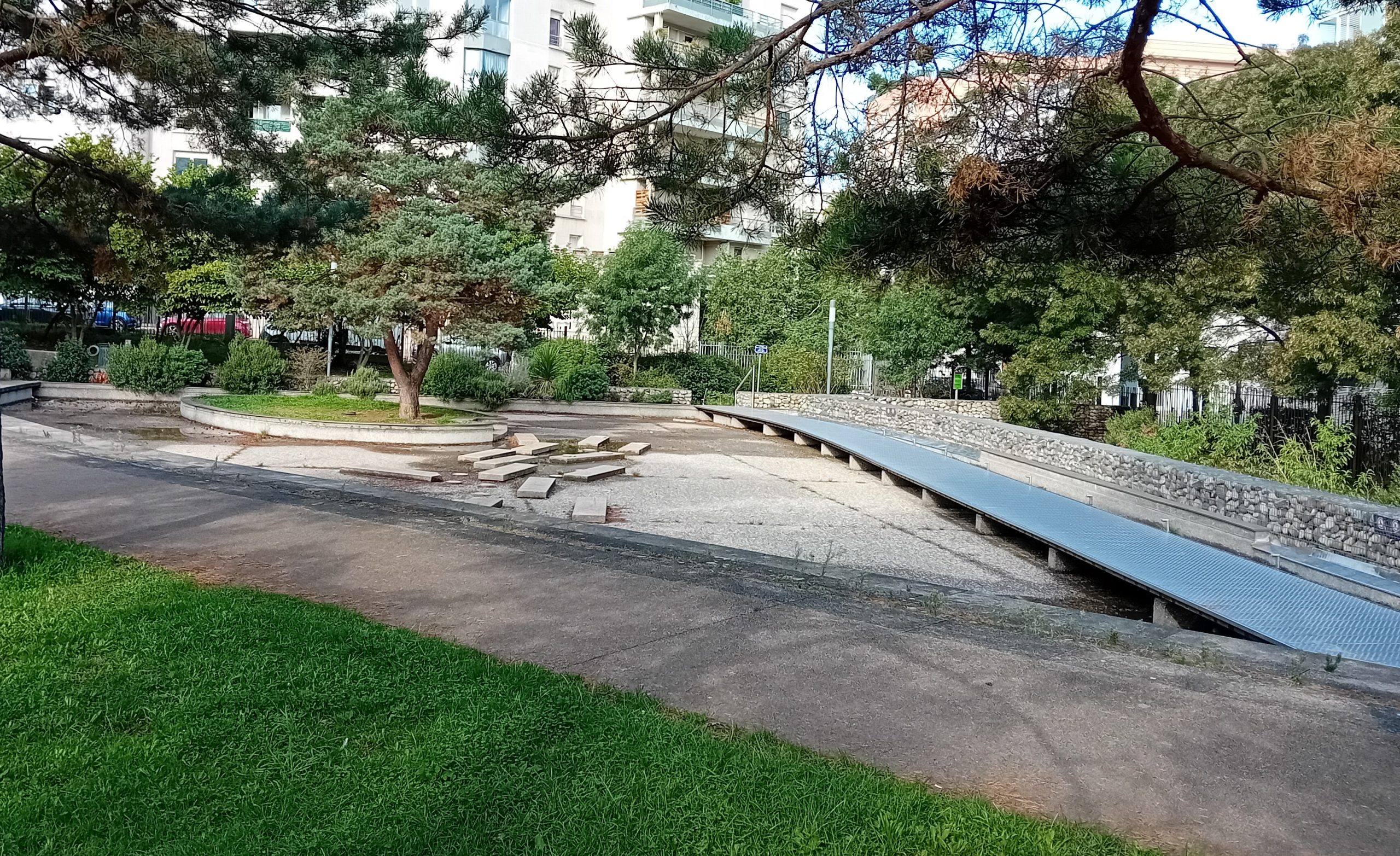
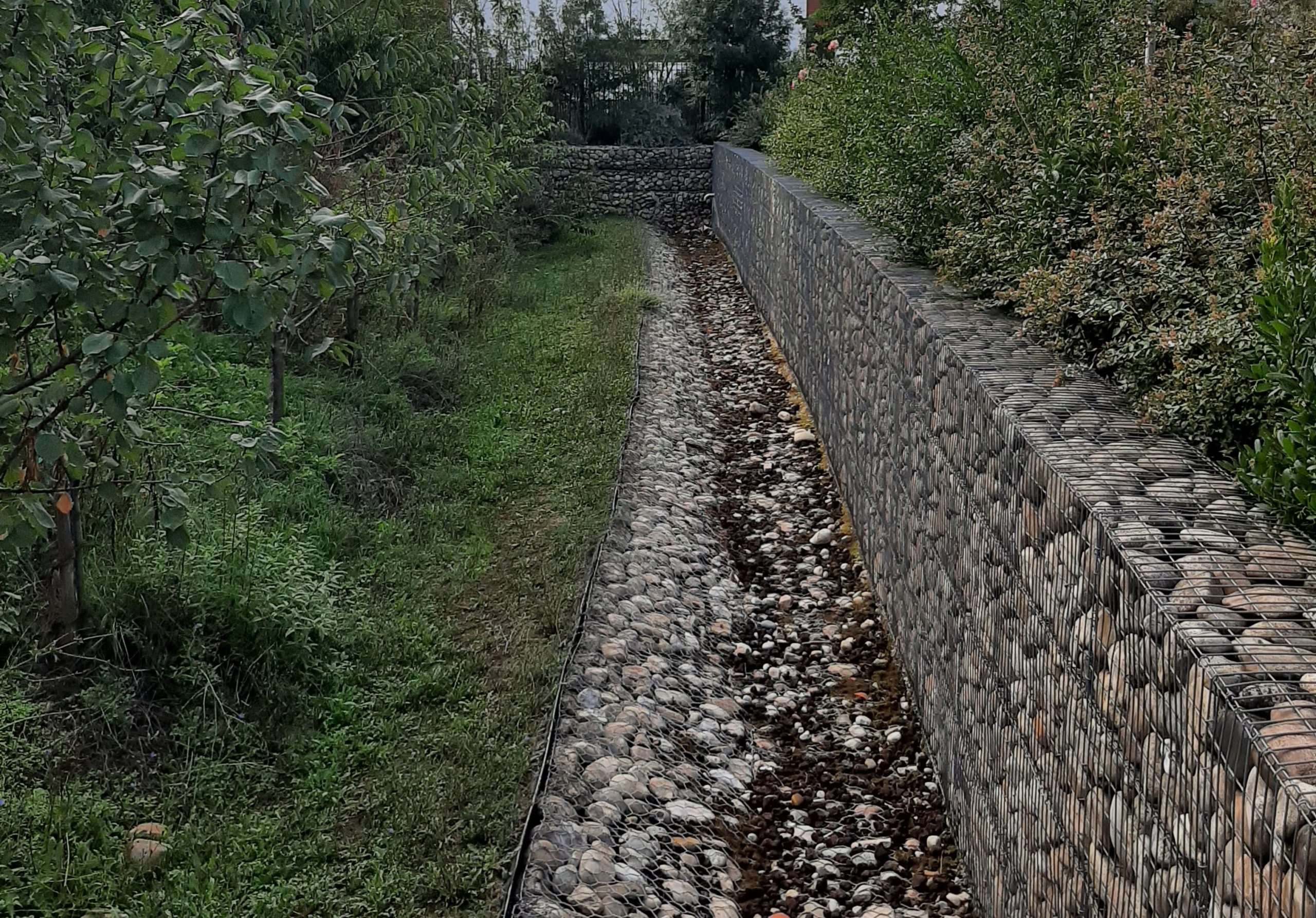
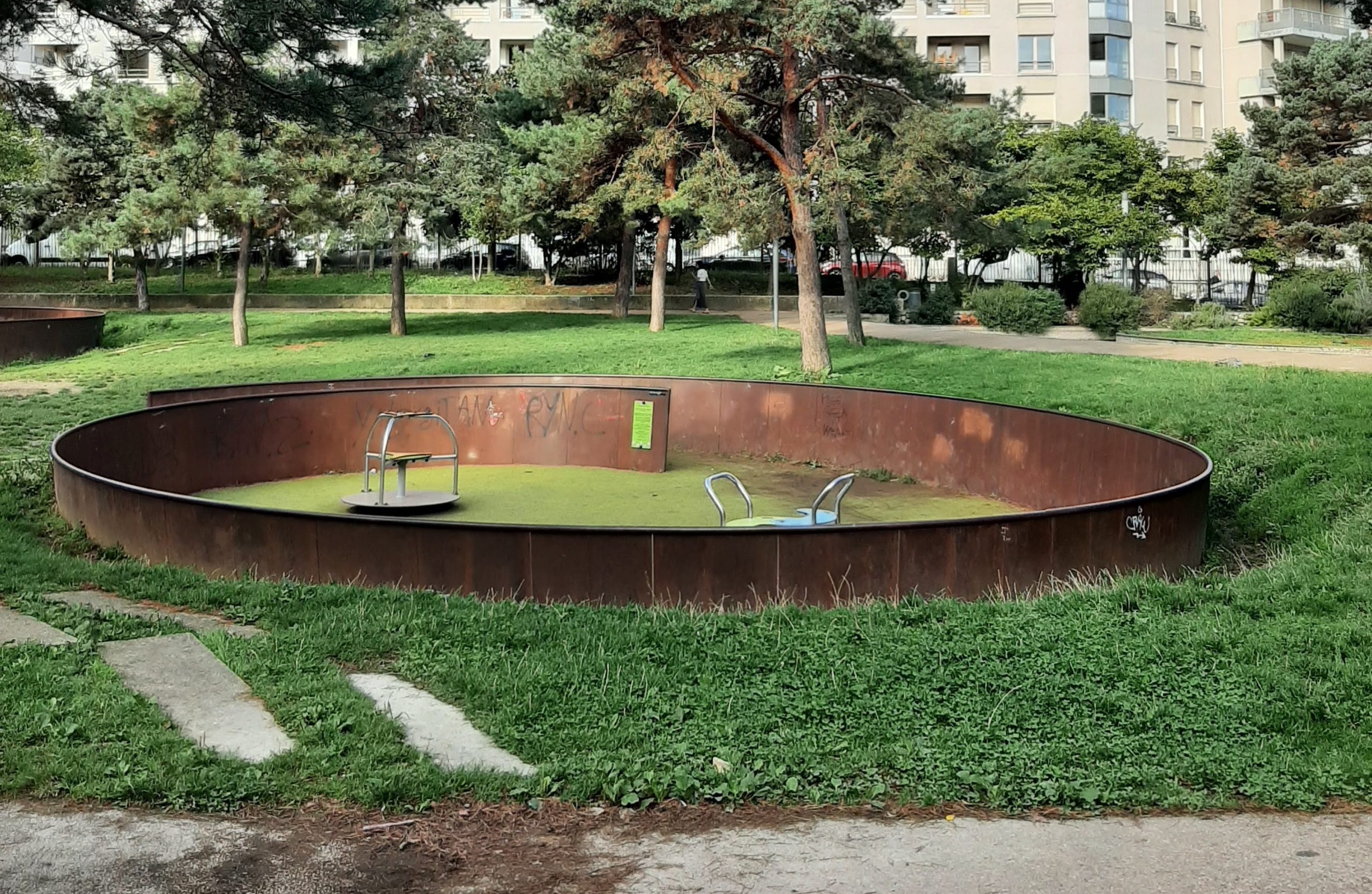
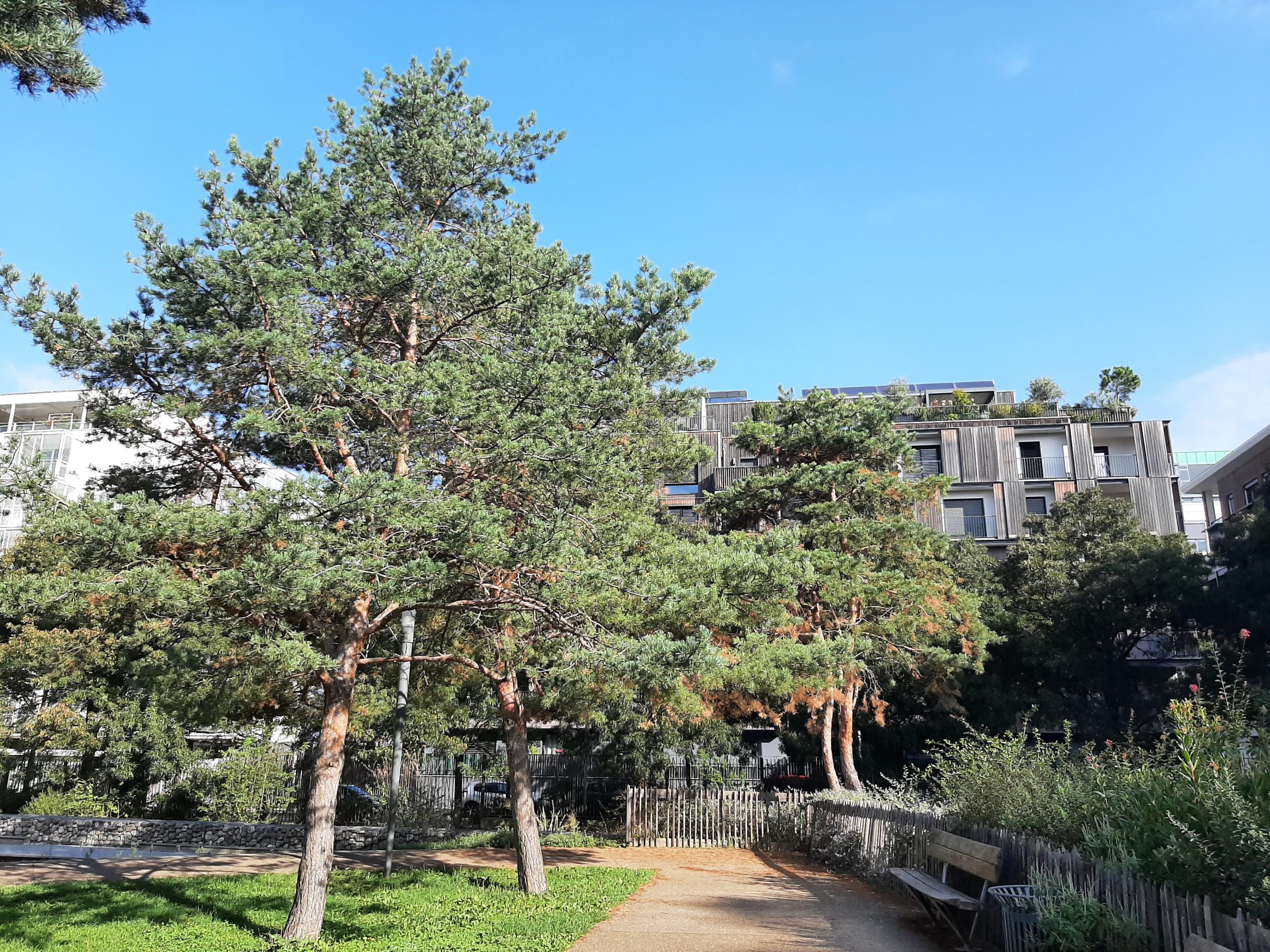
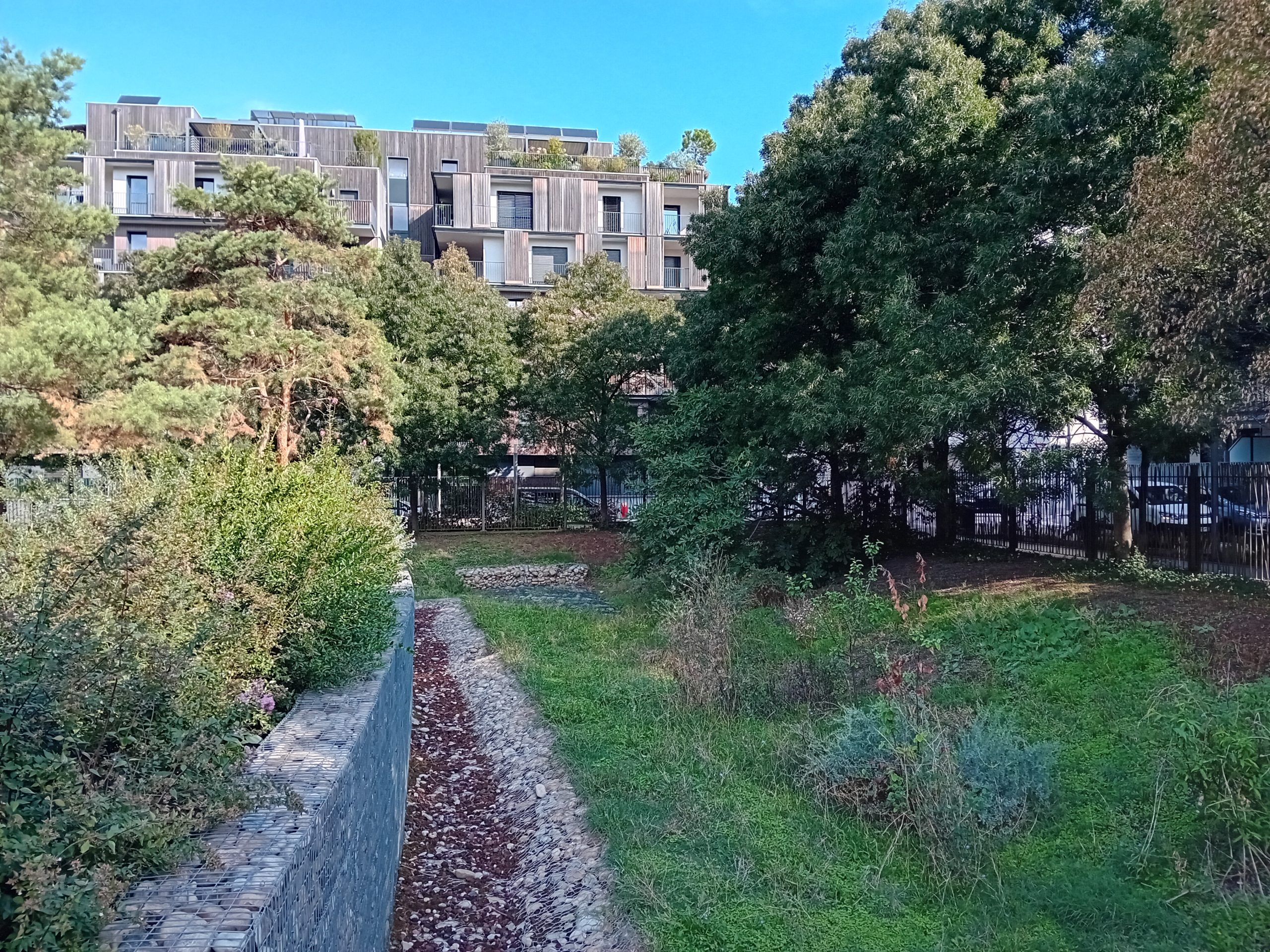
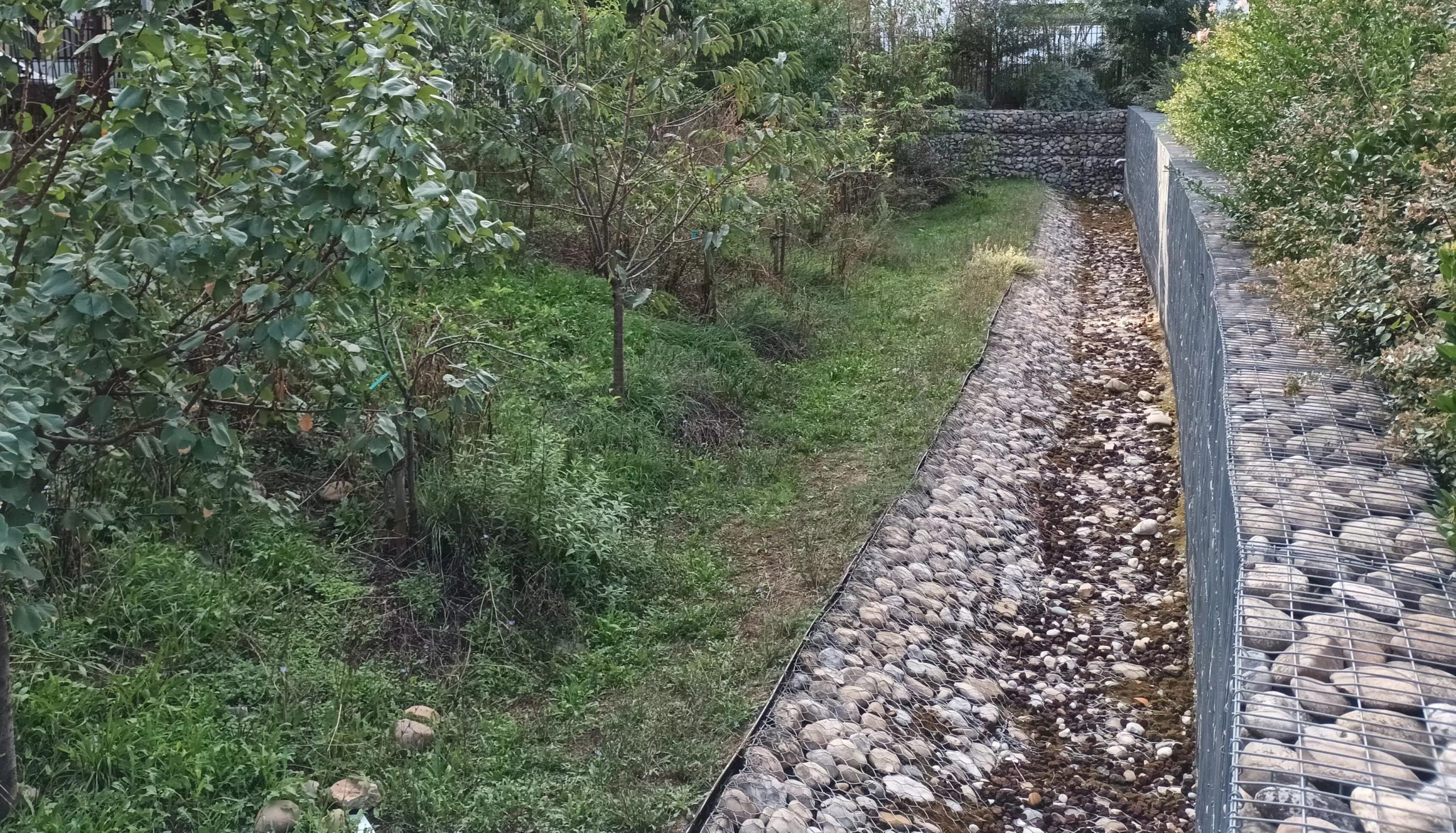



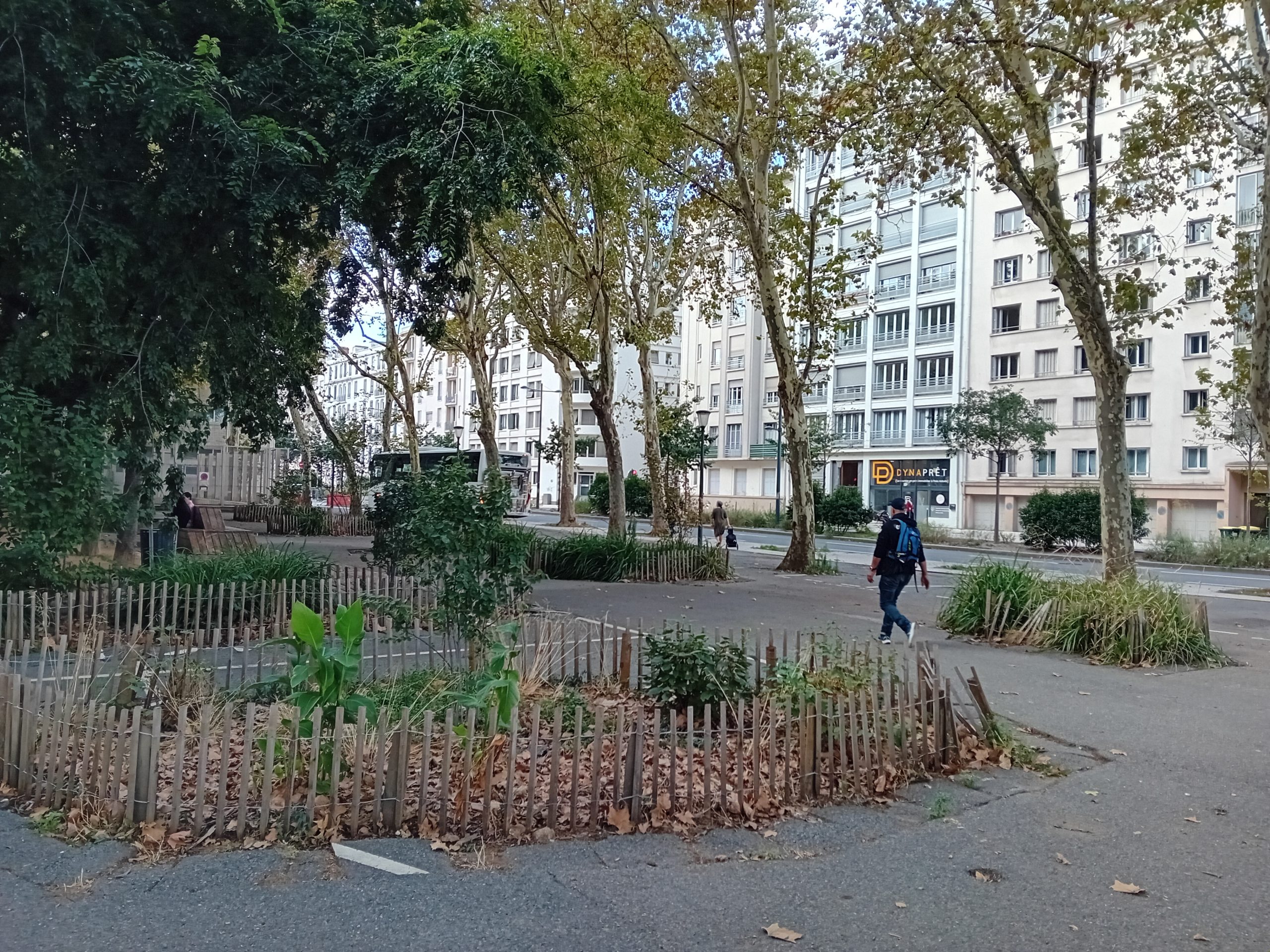
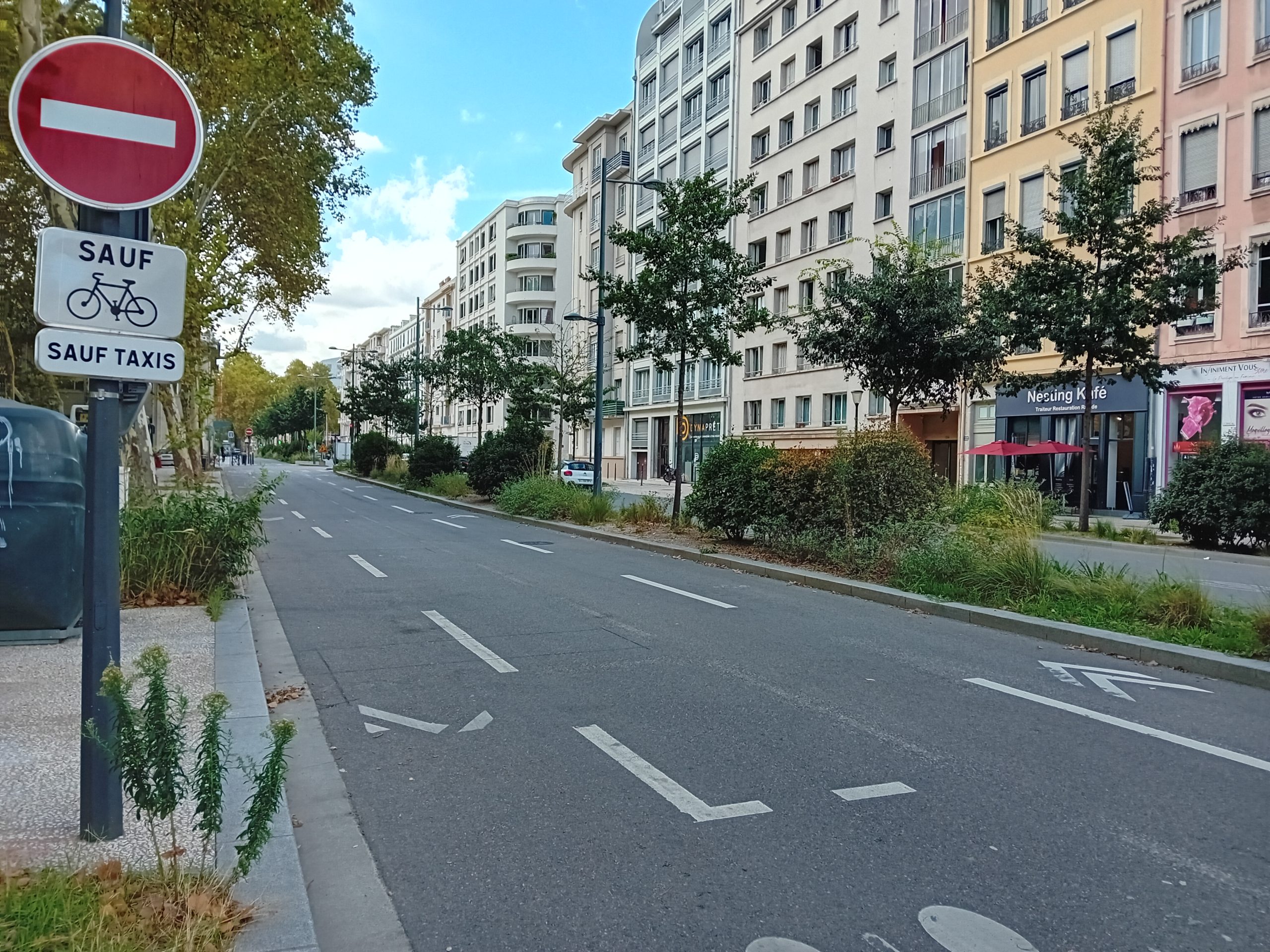


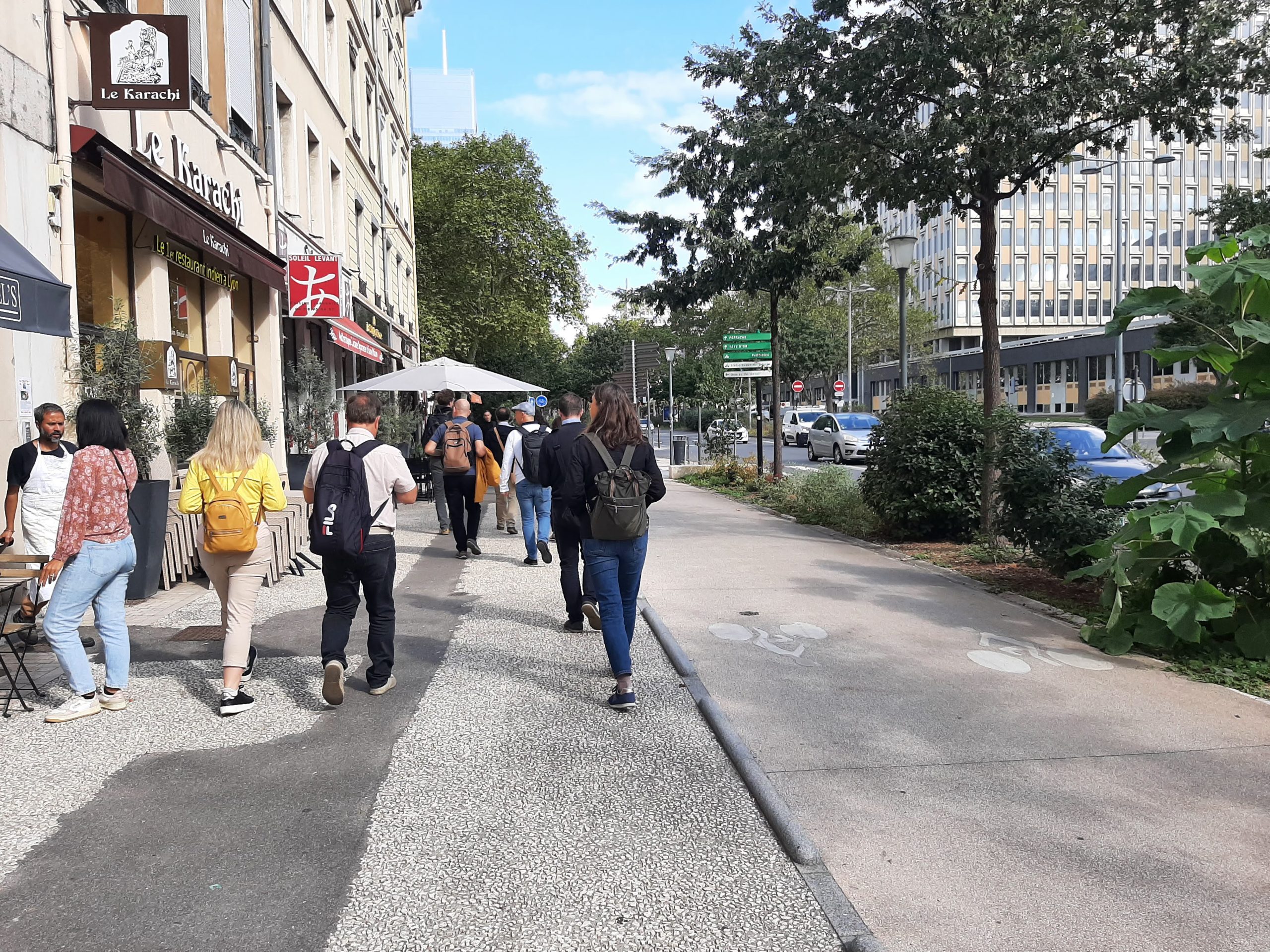
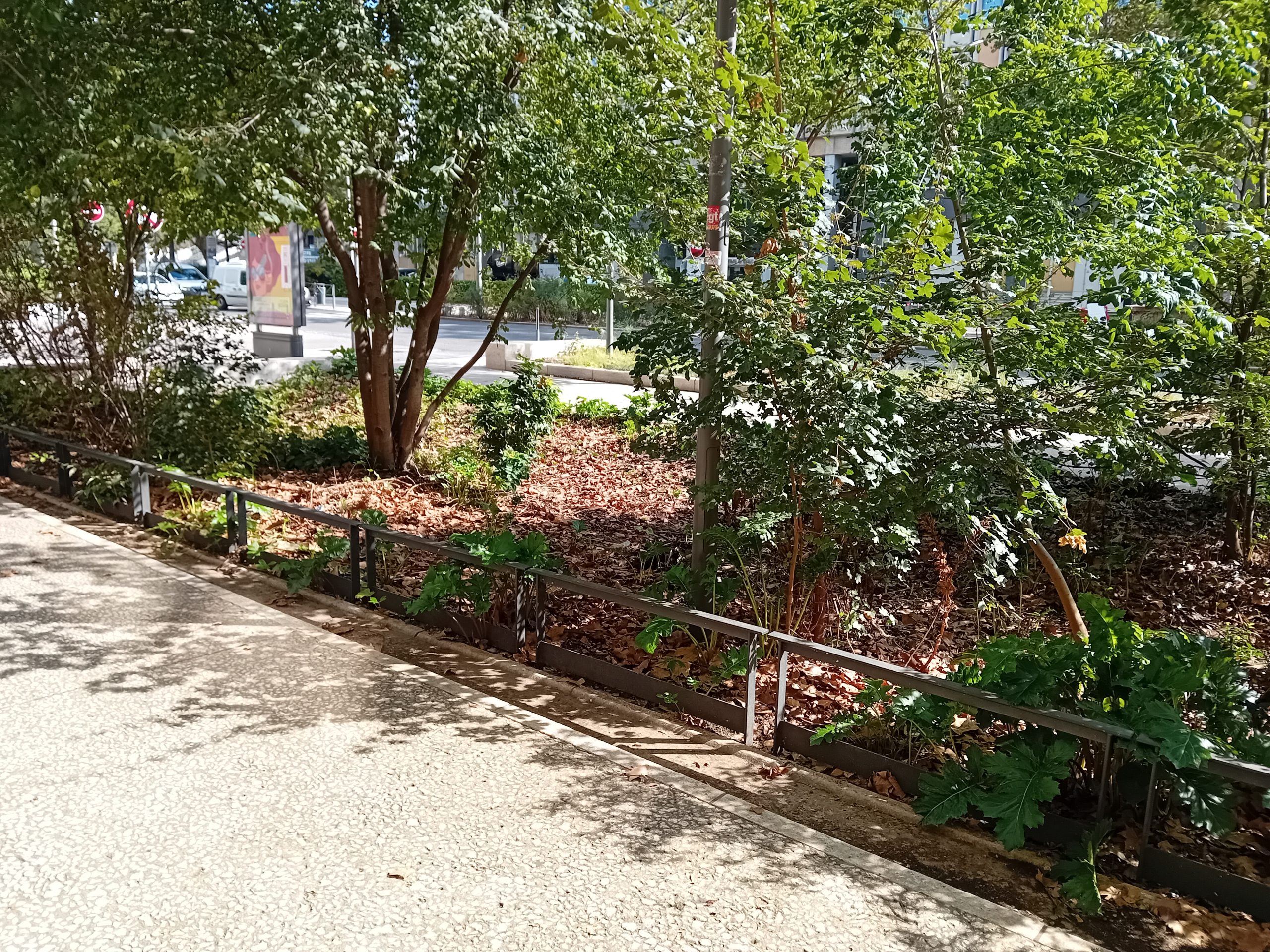


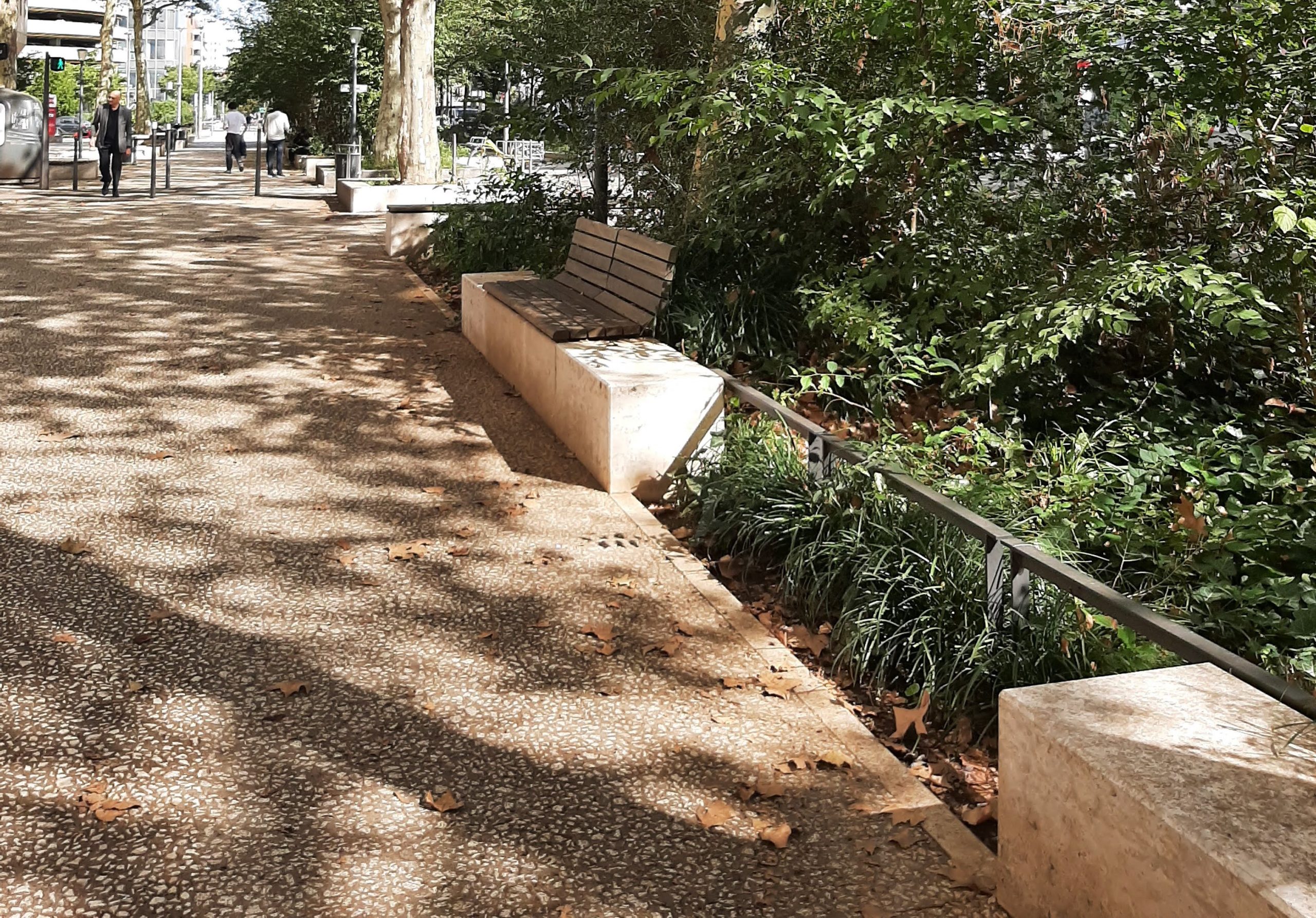
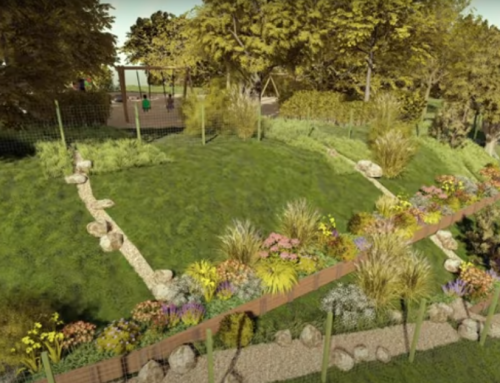

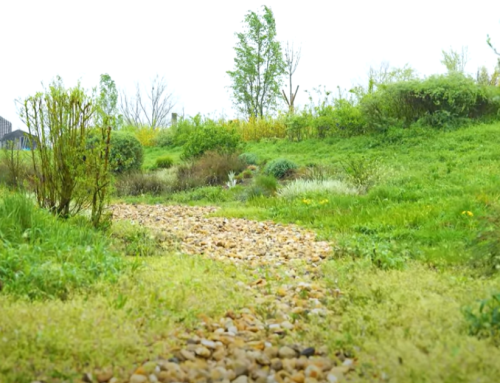

Hagyj üzenetet